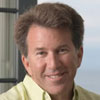| Online: | |
| Visits: | |
| Stories: |

| Story Views | |
| Now: | |
| Last Hour: | |
| Last 24 Hours: | |
| Total: | |
Do Chemicals Affect Children’s Brains?

Let’s face facts: chemicals don’t often make headline news, so the people who devote their lives to studying them usually spend those lives in obscurity. Heroes to all, they’re known by nearly none.
For more than 30 years, layer by layer, Dr. Philip Landrigan at New York’s Mount Sinai School of Medicine and Dr. Philippe Grandjean of the Harvard School of Public Health have been peeling back the modern world’s chemical onion. You want environmental rock stars? These two are U2 bundled in Bruce, rolled in the Stones, and served with a supersized side of Sir Paul. Yet the chances are good you’ve never heard their names. Still, if you’ve read two sentences of anything I’ve written here in the last 20 years, the chances are even better you know their work.
Whenever the Phils have something to say, we should listen very, very carefully. So I’m paying close attention to their recent declaration that the number of chemicals known to be toxic to developing brains has doubled since 2007.
In addition to five previously identified substances, the dynamic duo analyzed the data and found enough evidence to name six more common chemicals as pediatric neurotoxicants. That’s roughly one new named toxin per year and what the pair call a “pandemic of developmental neurotoxicity.”
The biggest effects of exposure to these pediatric neurotoxicants occur between conception and early childhood and include increased chances of IQ loss, reduced attention span, ADHD, emotional problems, less impulse control, and dyslexia.[1]
Not surprisingly, the chemical industry objects. A spokesman called the study “highly flawed.”[2] But who are you going to trust when it comes to your kids?
The only serious question is what chemicals are on the list. Here’s a look:
- Lead. Beware old paint and plumbing.
- Methylmercury. Watch your kids’ fish consumption, vaccine preservatives, and dental fillings.[3]
- Polychlorinated biphenyls. Banned in 1977, PCBs now exist mostly as pollution. Nothing to do but learn a hard lesson about the value of environmental regulations.[4]
- Arsenic. Mostly found in treated lumber made before arsenic-based treatments were banned in 2003. Exercise caution around older exterior wood products.[5]
- Toluene. Most exposures come from cigarette smoke and air pollution.[6]
- Manganese. An essential trace mineral that in excessive amounts (mostly via contaminated water and industrial sources) is linked to neurological harm.[7]
- Fluoride. Filter treated water, watch the toothpaste swallowing, and be cautious with processed foods and beverages, which are often made with fluoridated water.[8]
- Chlorpyrifos. It’s a pesticide. My rule? Never use any pesticide. Ever.
- DDT. Banned in 1972. See PCBs above.[9]
- Tetrachloroethylene. Think dry cleaning fluid and use an alternative “wet” cleaner or other green option instead.[10]
- Polybrominated diphenyl ethers (PBDEs). These flame retardant chemicals are found in electronics, foam products, mattresses, carpets, and house dust.[11]
About the Inkslinger
The Inkslinger has written about environmental issues for over 20 years and is a freelance writer for some of America’s most iconoclastic companies and non-profits. His true loves include nature, music of the Americana/rock and roll variety, interior design, books, old things, good stories, pagan rituals, and his wife of 24 years, with whom he lives in an undisclosed chemical-free rural Vermont location along with his teenage daughter and two infinitely hilarious Australian shepherds.
[1] http://edition.cnn.com/2014/02/14/health/chemicals-children-brains/
[2] Ibid.
[3] http://www.who.int/mediacentre/factsheets/fs361/en/
[4] http://www.atsdr.cdc.gov/substances/toxsubstance.asp?toxid=26
[5] http://www.atsdr.cdc.gov/csem/csem.asp?csem=1&po=5
[6] http://scorecard.goodguide.com/chemical-profiles/html/toluene.html
[7] http://umm.edu/health/medical/altmed/supplement/manganese
[8] http://www.nlm.nih.gov/medlineplus/ency/article/002420.htm
[9] http://pmep.cce.cornell.edu/profiles/extoxnet/carbaryl-dicrotophos/ddt-e…
Source: http://www.seventhgeneration.com/learn/blog/do-chemicals-affect-childrens-brains



